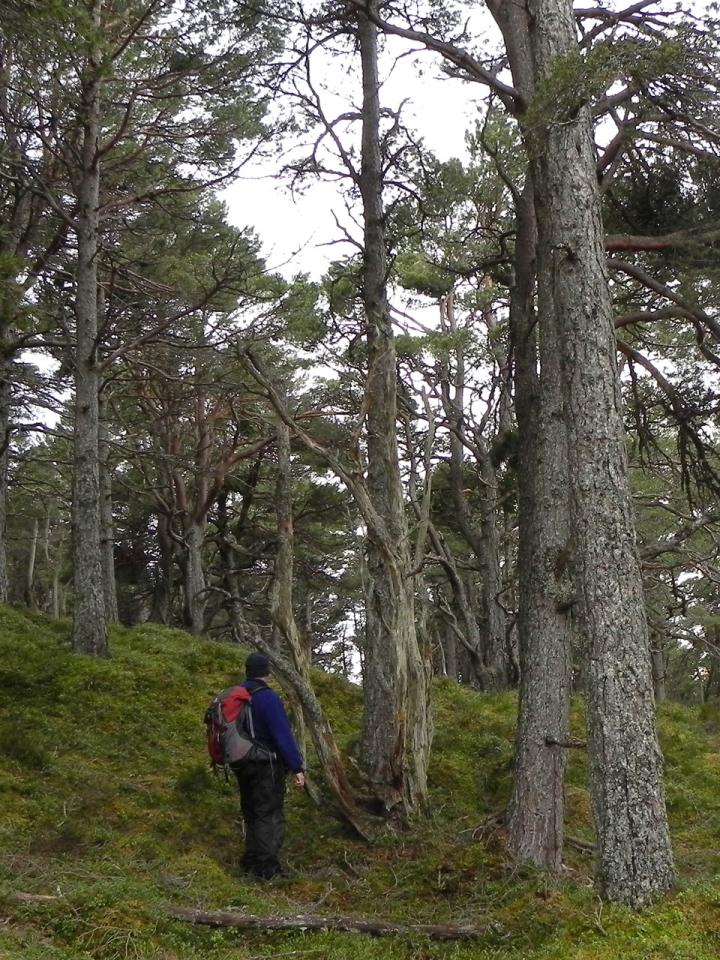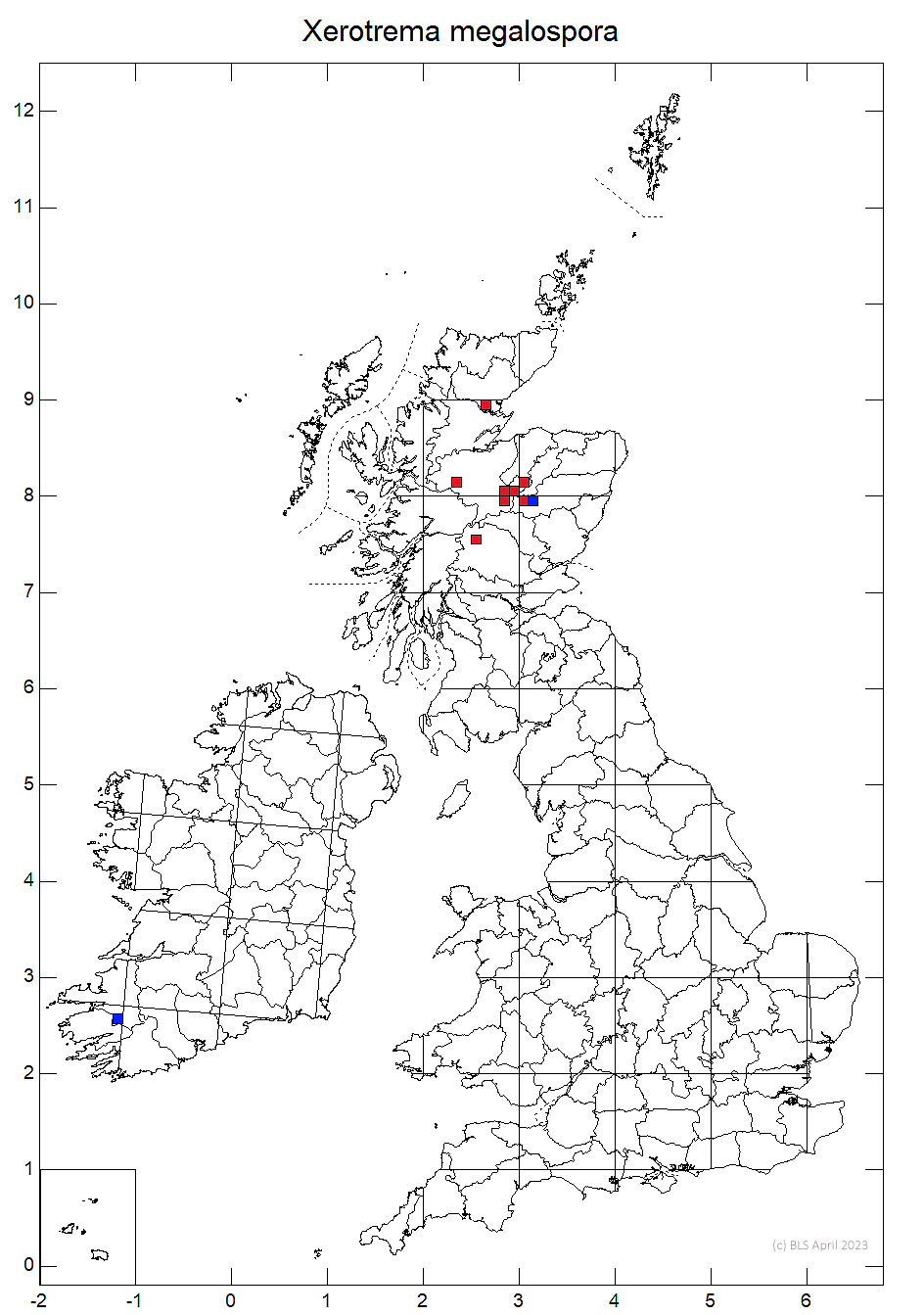Xerotrema megalospora
This is a rather inconspicuous fungus of lignum in old native pinewoods recorded by lichenologists. It requires targeted searching to find, but once spotted the the tiny urceolate apothecia with black dentate margins are distinctive. Found entirely on Pine lignum on large pieces of dead wood in open old growth pinewoods. The similar Xerotrema quercicola, has smaller spores and mainly occurs on Oak lignum in oceanic woodlands in west and south west Britain.
Apothecia 0.3–0.6 mm diam., the margins dentate, with coarse radial striations; disc urceolate, dark brown; exciple brown or occasionally with a faint green tinge in water mounts, lower parts K/I+ blue. Asci 140–180 × 35–40 μm, 1-spored. Ascospores 90– 140 (–170) × 22–40 μm, composed of numerous cells individually 3–4 μm diam., K/I–.
Separated from X. quercicola by the larger K/I– ascospores. Xerotrema quercicola is found western oceanic woodland, mostly beyond the known range of X. megalospora and mainly on Oak lignum, but there is some overlap in their respective distributions and in habitat, so microscopic examination is advised is cases of doubt.
On dry wood of trunks and branches of Pinus in old growth native pinewoods.

Rare, C. & E. Highlands of Scotland.
Confined to lignum on veteran Scots Pine and large pieces Pine dead wood (Pine bones), standing or fallen but propped off the ground, in open old growth native pinewoods. Appears to have small and fragmented populations. Requires a continuity of dead wood, so threatened in the long term by regeneration failure due to continuous high deer grazing, but also requires well lit situations, so is more immediately threatened by removal of grazing and the resultant dense Pine regeneration.
Britain: Near Threatened, International Responsibility species
Scotland: Priority Taxon for Biodiversity in Scotland
Cannon, P., Coppins, B., Aptroot, A., Sanderson, A. & Simkin, J. (2024). Ostropales genera I, including Absconditella, Belonia, Clathroporinopsis, Corticifraga, Cryptodiscus, Cryptolechia, Francisrosea, Gomphillus, Gyalecta, Gyalidea, Gyalideopsis, Jamesiella, Karstenia, Nanostictis, Neopetractis, Pachyphiale, Petractis, Phialopsis, Phlyctis, Ramonia, Sagiolechia, Secoliga, Sphaeropezia, Spirographa, Stictis, Thelopsis, Thrombium and Xerotrema. Revisions of British and Irish Lichens 38: 1–60.
Text by Neil A Sanderson, based on Cannon et al (2024).


